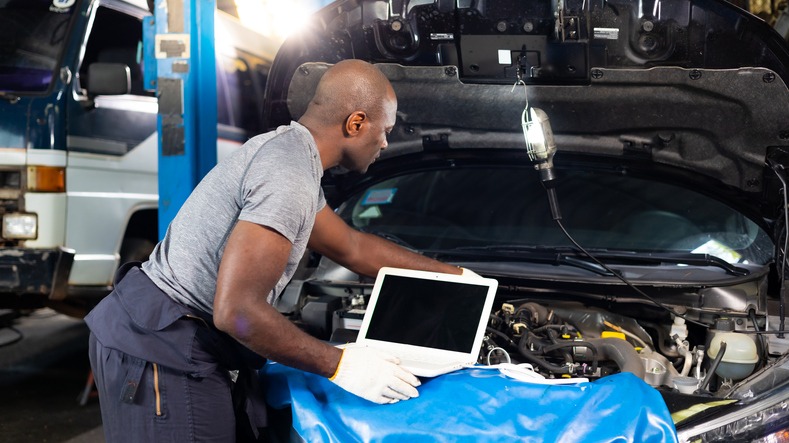Are you ready to take charge of your car’s maintenance and repairs? An OBD scanner can help you do that. OBD stands for “onboard diagnostics,” and it is the computer system in a vehicle that monitors engine performance and helps detect problems with an array of sensors throughout the car. To properly diagnose any problem with your car, you need a reliable OBD scanner that provides accurate information on how well or poorly its various components are performing.
With so many different types of scanners available today, choosing the right one for your needs can be daunting – but have no fear. In this article, we’ll cover what features to look out for when choosing an OBD scanner and provide our top recommendations for ensuring you get just what you need.
What is an OBD scanner, and what does it do?
The OBD scanner is a revolutionary tool that lets car owners diagnose and troubleshoot their vehicles. This device can provide crucial vehicle performance information, making it invaluable for car mechanics and everyday drivers alike. By connecting to a vehicle’s computer system, the scanner records a wide range of data, including engine temperature and fuel level, allowing users to quickly monitor their car’s health. If you want to purchase high-quality car and truck OBD2 diagnostic scanners online, we recommend you contact Ancel.
Furthermore, the OBD scanner can pinpoint common malfunctions such as loose battery cables or faulty spark plugs in minutes, helping drivers get back on the road faster. With its extensive capabilities and intuitive user interface, the OBD scanner is a must-have for everyone who wants to keep their vehicles running smoothly. An OBD 1 scanner is the most basic type of OBD scanner and can be used for essential diagnostics and troubleshooting.
How do you know which one to buy for your vehicle, make, and model?
The first step when purchasing an OBD scanner for your car is determining which type of scan tool you need. Depending on the age and make of your vehicle, you may need either an OBD 1 or OBD 2 scanner. Both types can read diagnostic trouble codes (DTCs) and retrieve live data from a vehicle’s computer system.
If you have an older model car, you will likely need an OBD 1 scanner since this model was used in cars up until 1996. On the other hand, newer vehicles manufactured after 1996 typically use the more advanced OBD 2 standard and will require a compatible scan tool to access all available features. You can usually identify your car’s standard by consulting your vehicle’s owner’s manual or visiting the OBD scanner’s website for more information.
Another critical factor to consider when buying an OBD scanner is compatibility with other makes and models. If you own multiple vehicles or plan on using the same device for various cars, it is essential to ensure your scanner is compatible with all of them.
What are the benefits of using an OBD scanner?
Using an OBD scanner offers several benefits for car owners. One of the most significant advantages is that it can save time and money when identifying and addressing problems with a vehicle’s performance. By accessing diagnostic trouble codes (DTCs) and hidden error codes stored in a vehicle’s computer system, the scan tool can quickly pinpoint any issues causing a problem.
It can help you diagnose and fix the issue yourself or take your vehicle to a repair shop with detailed information on what needs to be done. Furthermore, many scanners come with additional features, such as built-in repair guides or access to online resources, which can further assist in diagnosing and repairing complex issues.
Finally, an OBD scanner can track and monitor your vehicle’s performance over time. By collecting detailed data, such as engine temperature or fuel level, the scan tool can alert you to any changes in your car’s performance that may warrant further investigation. This way, you can stay informed of any problems with your vehicle before they become a significant issue.
How easy is it to use an OBD scanner, and what are the steps in diagnosing a problem?
Using an OBD scanner is a relatively straightforward process. First, the user must determine what type of scan tool they need and ensure it is compatible with their vehicle’s make and model. Once you have identified the suitable scanner for your car, it is time to connect it. Depending on your device, this may involve plugging it into your vehicle’s diagnostic port or connecting via Bluetooth.
Once connected, the user can select from several diagnostic functions, such as reading trouble codes or retrieving live data from the vehicle’s computer system. From there, one can analyze the information provided by the scan tool to identify any potential problems that may be causing issues with performance.
Depending on the severity of the problem, the user can then decide whether to fix it themselves or take their car to a repair shop with detailed information on what needs to be done. It can save time and money and reduce stress when diagnosing and addressing a vehicle issue.
Are there any downsides to using an OBD scanner?
Although there are numerous benefits to using an OBD scanner, there are also some downsides. For instance, many more advanced features with specific scan tools require a subscription or purchase to unlock them. It can be costly for users who only need basic scanning and diagnostic capabilities.
Furthermore, due to the sheer variety of makes and models available on the market, it cannot be easy to find a scanner compatible with all vehicles. Users must check compatibility before purchasing to ensure they get the best product for their needs.
Finally, car owners should be aware that while an OBD scanner can help identify potential problems with a vehicle’s performance, it cannot fix the issue itself. Even after diagnosing a problem, you may still need to take your car to a repair shop to fix it properly.

